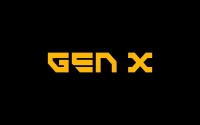For seventy years, we’ve been chasing the same beautiful, impossible dream: fusion energy. The power of a star, bottled right here on Earth. Clean, limitless, and transformative. It's the kind of technology that could rewrite the story of human civilization. But there has always been a monster at the heart of the machine, a fundamental challenge that has kept this dream just out of reach. The "star" in the bottle—a superheated plasma hotter than the sun's core—is violently unstable. And keeping it from crashing has been one of the hardest problems in all of physics.
Until now.
In a quiet experiment at the TCV tokamak in Switzerland, a team of researchers just demonstrated something that changes the entire game. They taught an artificial intelligence not just how to analyze the plasma, but how to anticipate its chaotic behavior and steer it away from catastrophic failure before it even begins. This isn't just another incremental step forward. This is a paradigm shift, detailed in a paper titled Learning plasma dynamics and robust rampdown trajectories with predict-first experiments at TCV.
Taming the Sun's Fury
Imagine you're a pilot trying to land the most advanced, most powerful, and most unpredictable aircraft ever built. That’s basically the job of a fusion scientist controlling a tokamak. The "aircraft" is a donut-shaped cloud of plasma, held in place by impossibly strong magnetic fields. As long as it flies, you're generating power. But if it even grazes the walls of its container, it "disrupts"—a catastrophic energy dump that can damage the multi-billion-dollar reactor. The most dangerous part of the flight is the landing, or what scientists call the "rampdown," where you have to gently guide this volatile energy back to zero.
For decades, we’ve been flying by the book. Scientists write complex control programs based on our best understanding of plasma physics, but our understanding has always been incomplete. It's like having a flight manual that's missing crucial chapters on turbulence. The result? We fly cautiously, leaving huge safety margins, and disruptions still happen.
What the team at TCV did was revolutionary. They built an AI co-pilot. This AI is like a seasoned veteran who has flown a thousand different planes in a thousand different storms. It doesn't just follow the manual; it has an intuitive feel for the air. It can sense the subtle shifts in pressure and wind that come seconds before the plane starts to shake, and it makes tiny, proactive adjustments to keep the flight perfectly smooth. This AI learned to "feel" the plasma.

They used a technique called Reinforcement Learning—in simpler terms, they let the AI practice landing the plasma in a hyper-realistic simulation millions of times. It was rewarded for safe, fast landings and penalized for getting anywhere near the danger zones. It learned the subtle dance of magnetic fields, power inputs, and plasma shape required to guide the star home without a single catastrophic bump. When I first read that they trained their initial model on a dataset containing just five relevant past shutdowns, I honestly had to re-read the sentence. Five. That’s not big data; that’s smart data. It speaks volumes about the power of this approach.
The Co-Pilot for Discovery
Here's where it gets truly profound. The AI wasn't just executing a pre-programmed flight plan. It was designing entirely new ones. After each real-world experimental run, the team fed the new data back into the AI. Within hours—not months, but hours—the AI would retrain itself and come back with an even better, more robust strategy for the next attempt. This isn't just about programming a better shutdown sequence—it's about creating a dynamic learning partner that can explore the chaotic landscape of plasma physics faster than any team of humans ever could, iterating in hours what used to take months or years of painstaking experiments.
During the experiments, the AI-designed trajectories succeeded where previous human-designed ones had failed, achieving a faster and completely disruption-free rampdown. Then came the ultimate test. The researchers configured the tokamak for a higher-power scenario that the AI had never seen before. It was the equivalent of asking your pilot to land a brand-new type of aircraft in a storm, with no prior training.
The AI generated a prediction of how the plasma would behave and designed a safe landing path a priori—before the experiment ever ran. And it worked. The real-world plasma followed the AI's prediction almost perfectly, landing safely. This is the kind of breakthrough that reminds me why I got into this field in the first place. It's a glimpse of a future where human ingenuity is amplified by artificial intuition.
This isn't just about fusion anymore, is it? We're looking at a new model for scientific discovery itself. What happens when an AI like this can learn from the data of every single tokamak on Earth simultaneously, sharing insights from experiments in Europe, Asia, and the United States in real-time? What other complex, chaotic systems—from climate modeling to protein folding to financial markets—could we finally begin to understand and manage with this kind of predictive power?
The Dawn of the AI Scientist
This experiment at TCV wasn't just a success; it was a message from the future. For decades, we've treated AI as a tool—a powerful calculator for crunching the data our theories produced. What we're seeing now is the emergence of AI as a true scientific partner. It’s an entity that can navigate the messy, unpredictable reality of experimentation, learn from it faster than we can, and guide us toward solutions that were hidden in the sheer complexity of the problem. We've been trying to bottle a star for nearly a century. It turns out we might have needed an artificial mind to help us finally figure out how to land it.









